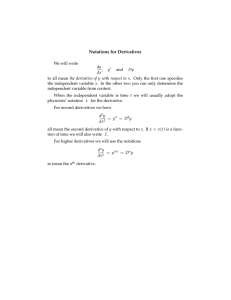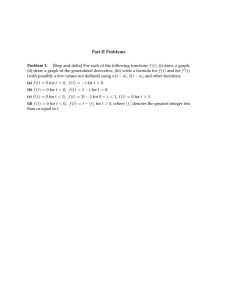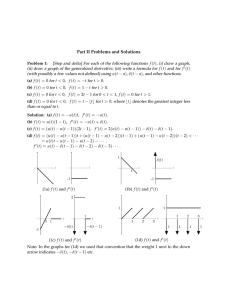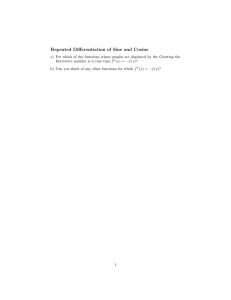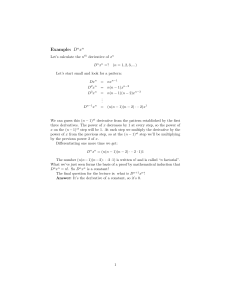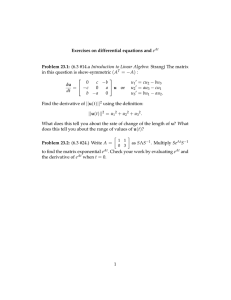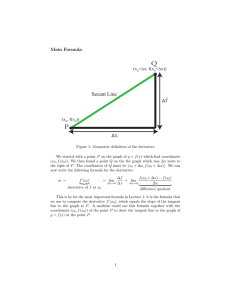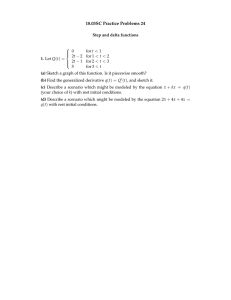Notations
advertisement
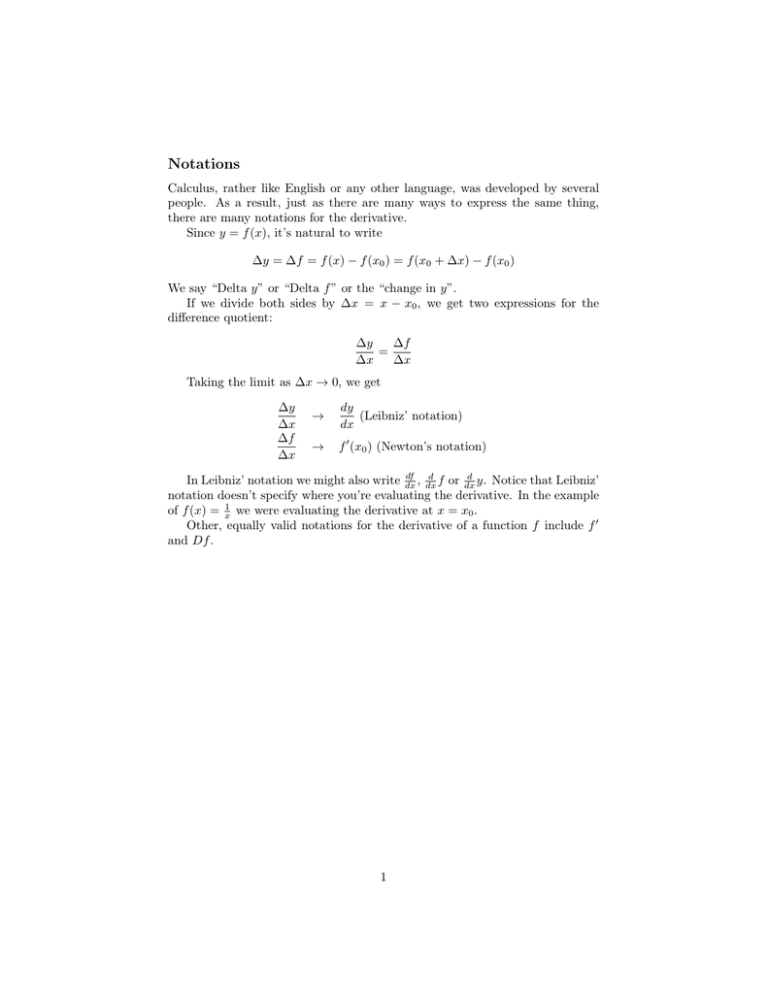
Notations Calculus, rather like English or any other language, was developed by several people. As a result, just as there are many ways to express the same thing, there are many notations for the derivative. Since y = f (x), it’s natural to write Δy = Δf = f (x) − f (x0 ) = f (x0 + Δx) − f (x0 ) We say “Delta y” or “Delta f ” or the “change in y”. If we divide both sides by Δx = x − x0 , we get two expressions for the difference quotient: Δy Δf = Δx Δx Taking the limit as Δx → 0, we get Δy Δx Δf Δx → dy (Leibniz’ notation) dx → f � (x0 ) (Newton’s notation) df d d In Leibniz’ notation we might also write dx , dx f or dx y. Notice that Leibniz’ notation doesn’t specify where you’re evaluating the derivative. In the example of f (x) = x1 we were evaluating the derivative at x = x0 . Other, equally valid notations for the derivative of a function f include f � and Df . 1 MIT OpenCourseWare http://ocw.mit.edu 18.01SC Single Variable Calculus�� Fall 2010 �� For information about citing these materials or our Terms of Use, visit: http://ocw.mit.edu/terms.
